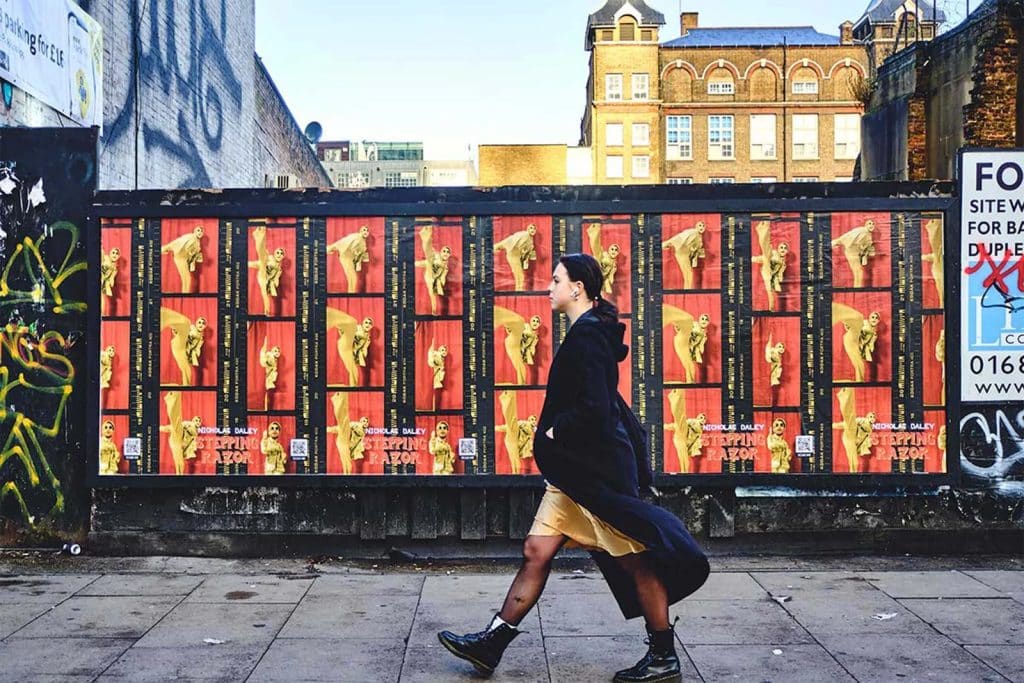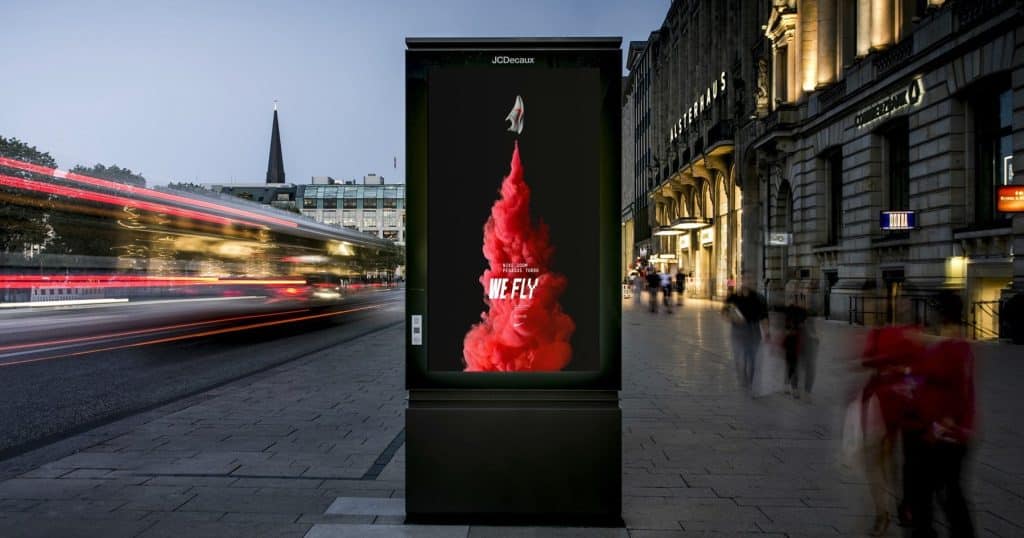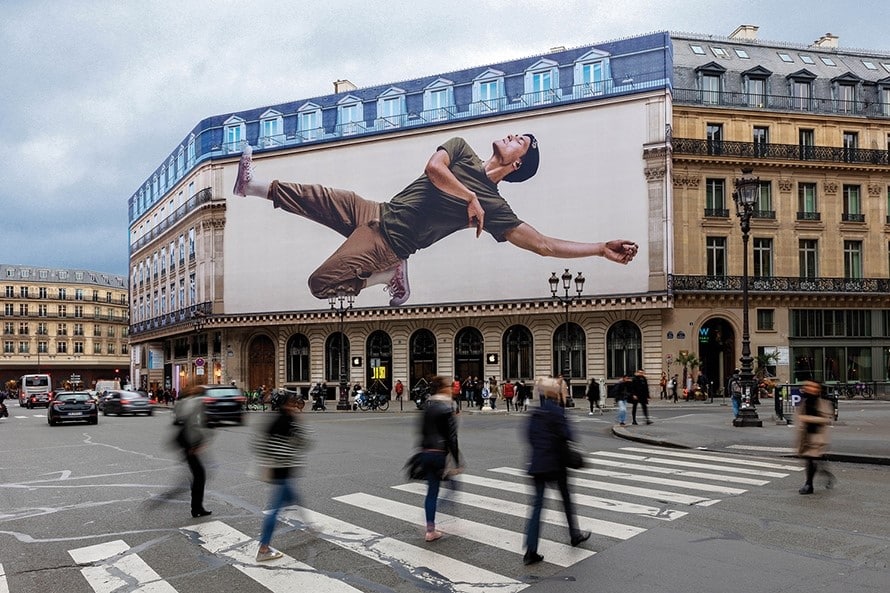It’s a month into 2023, making it the right time to look at the trends that will shape the year in out of home advertising. We’re over that January hump where a mix of optimism and resolution fairy dust can sometimes color our perceptions, and into the calmer February period where last year’s more of a memory and everyone feels more focused.
We like to look ahead because it keeps our clients a step ahead of their competition. Like in a 100-meter dash, you want to be the one setting the pace, not coming from behind. Embracing ideas that others will later latch onto makes your brand look smart.
So what do we foresee for this year? Here are five out of home trends we’re keeping an eye on in 2023.
1. OOH Ad Spending Keeps Surging

It’s impossible to overstate how important this is, at a time when every other traditional medium has seen declines. It says something about the medium that it has continued to climb. The others have fallen off because of the perception that they can’t compete for time or influence compared to digital.
That’s where OOH has an advantage. It is not entirely digital, but it includes digital elements, and it can be shared digitally (see social growth below), which gives it another sphere of influence beyond the initial display.
Because of that, advertisers have remained enamored with this type of traditional media, which shows in the numbers. According to a report from KPMG Advisory, outdoor advertising’s compound annual growth rate during the past five years was 11%. That’s way ahead of any other traditional medium. In fact, sectors like magazines and newspapers are down, not up.
Just as a good ad tells a story, OOH needs to embrace this storyline. There’s no better way to prove your effectiveness than to show how much people in your industry believe in you, and that really seems to be the case here. Advertisers are voting with their dollars. OOH is winning.
2. Digital Out of Home Continues to Grow, But Data Is a Sketchy Area

Now, driving many of those wins is digital out of home, or DOOH. According to the Out of Home Advertising Association of America, DOOH has seen striking gains, including greater than 50% increases in spending in 2022.
Dynamic messaging has so many advantages. You can:
- Swap out creative with the tap of a button, allowing advertisers to present timely messages about upcoming sales or events.
- Be creative with presentation and wording.
- Speak to what’s happening in the world at the moment.
And, perhaps most of all, it’s simply the wave of the future. Everything’s coming up digital, and that’s not going to change as we adapt to lives where our smartphones plan out our daily schedules and provide entertainment as well as communication.
Still, as a young medium, it does have growing pains. Measurement of DOOH reach and concerns about privacy (such as using DOOH to ping smartphones) remain hurdles to greater adoption of the format. Big data has caused big headaches, and digital outdoor advertising is still proving where it fits into the mix. Smart advertisers will get ahead of the curve by using DOOH as a complement to other traditional OOH strategies.
3. Social Media Has Never Been More Important
The extra pop OOH campaigns receive from social media exposure gives the medium an additional dimension that other traditional formats can’t compete against. And don’t just take our word for it; there’s research to back up this phenomenon.
A study from OAAA found that an astounding 82% of TikTok users, 81% of Instagram users and 80% of Facebook users say they see OOH content on their feeds regularly. People share the out of home displays they see in their daily lives, such as snapping a photo of a funny billboard or recording a video of an experiential setup and sharing them. That exposure is organic, so advertisers don’t have to pay for it, and it also speaks to OOH’s effectiveness.
No one asked these people to share the ads. They just did it because they liked the concepts behind them that much. It represents a huge vote of confidence for the medium, and that only stands to grow as the number and reach of platforms grow. It’s pretty clear that social has become an unexpectedly powerful arbiter of popularity. OOH is well-positioned to take advantage of that, while TV, magazines, newspapers and other traditional media are not.
4. Even With Digital Growth, Analog Methods Still Have a Firm Place in the Spotlight

Yes, we’re talking a lot about digital formats, but you know what? Nothing will ever reduce or replace the effectiveness of the most traditional methods of advertising. An amusing billboard, a fun illustration on a park bench, a well-located Wild Posting® campaign—all of these continue to draw eyeballs in the same way that they did 10, 20, even 50 years ago.
Getting people’s attention is the name of the game in outdoor advertising, and people still see what’s around them, no matter how attached to their phones they are. They observe the clever ads as they commute to work on public transit, they notice a new album they’ve seen five signs for in one block. OOH works because it stands out when people go out. And people have never been more eager to get out, post-COVID.
5. The Bar Will Be Set Higher With Better Creative
We admit to being OOH nerds because that’s our job. But we’re often impressed by the new ideas we see being implemented and the go-for-the-gold mentality that results in better campaigns. We love it when that’s facilitated by governments or municipalities that encourage creativity. Or when one brand’s 3D billboard in Times Square begets another brand’s even splashier display and advertisers see each other’s good ideas not as things to one-up but things to inspire.
That’s what advertising should be about—finding better ways to do things that people like. Everyone wins when creative gets better.

